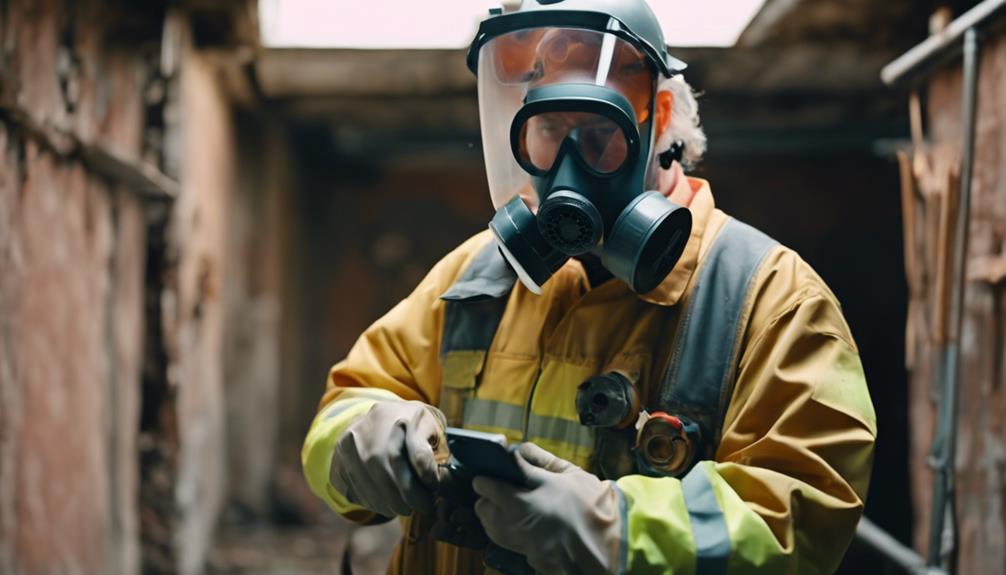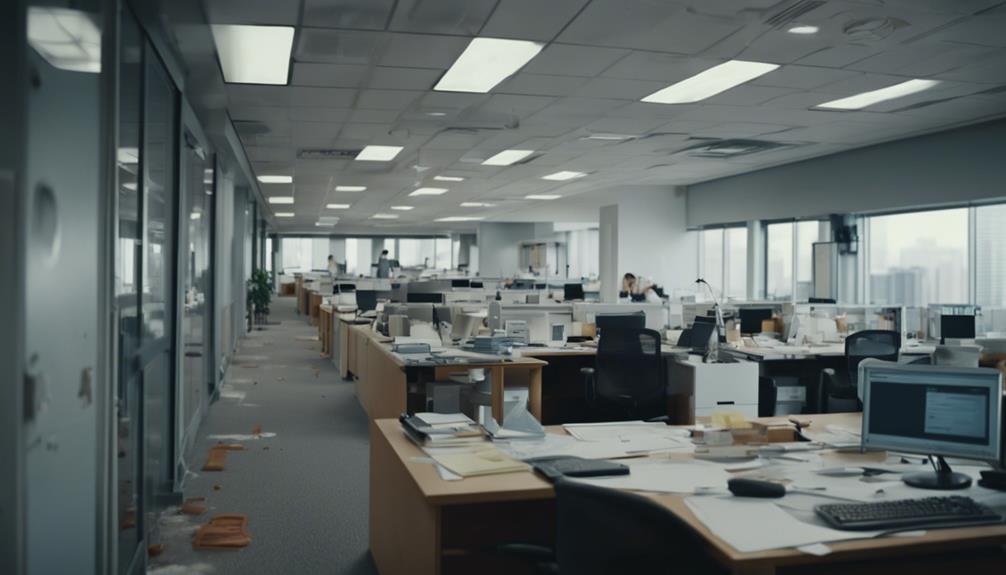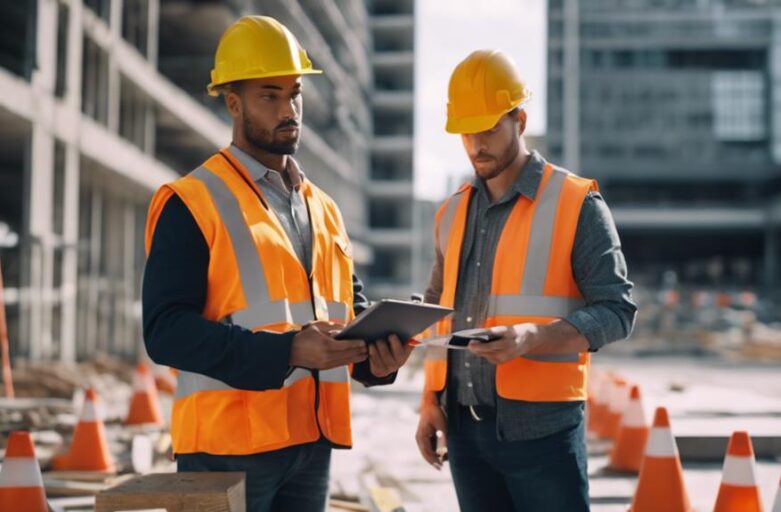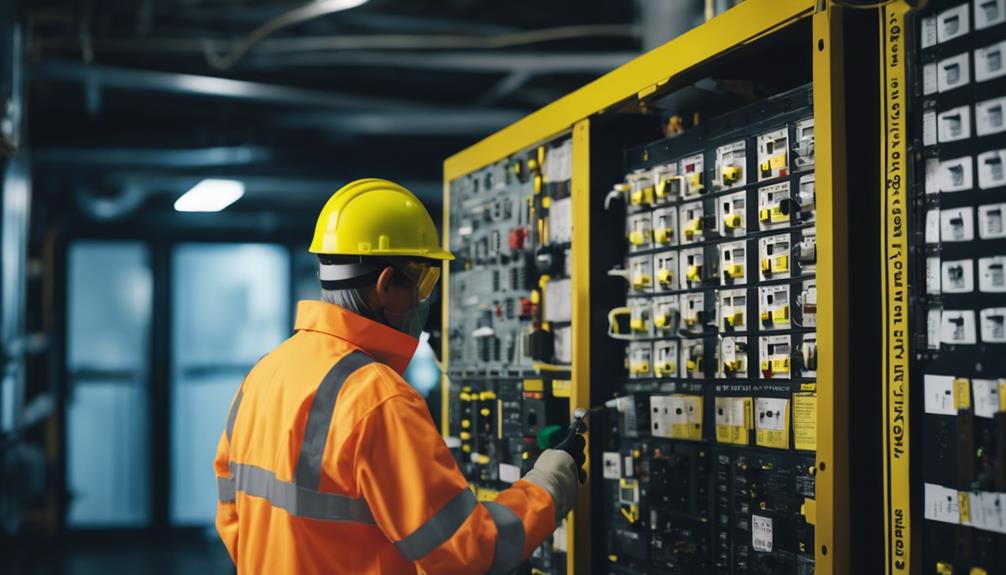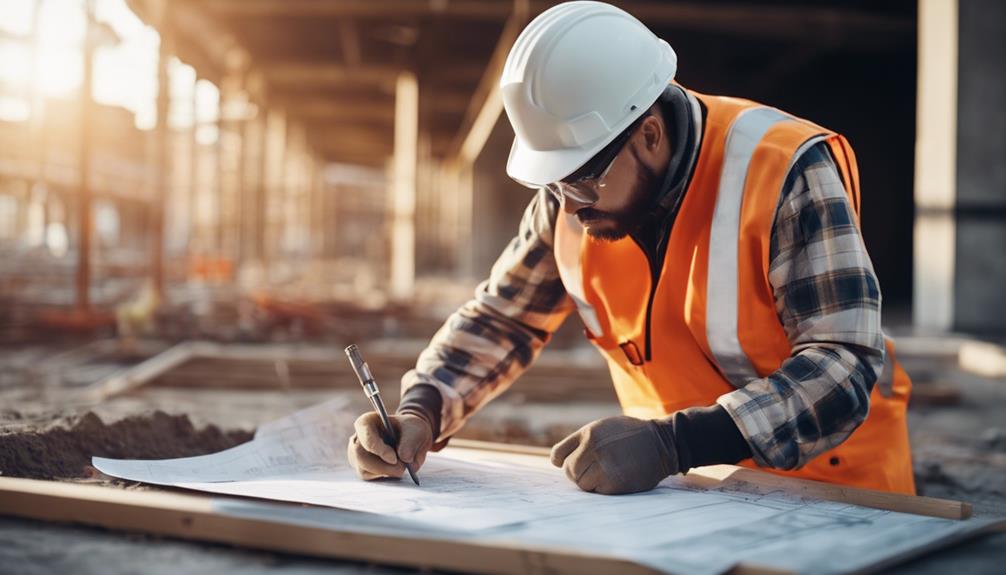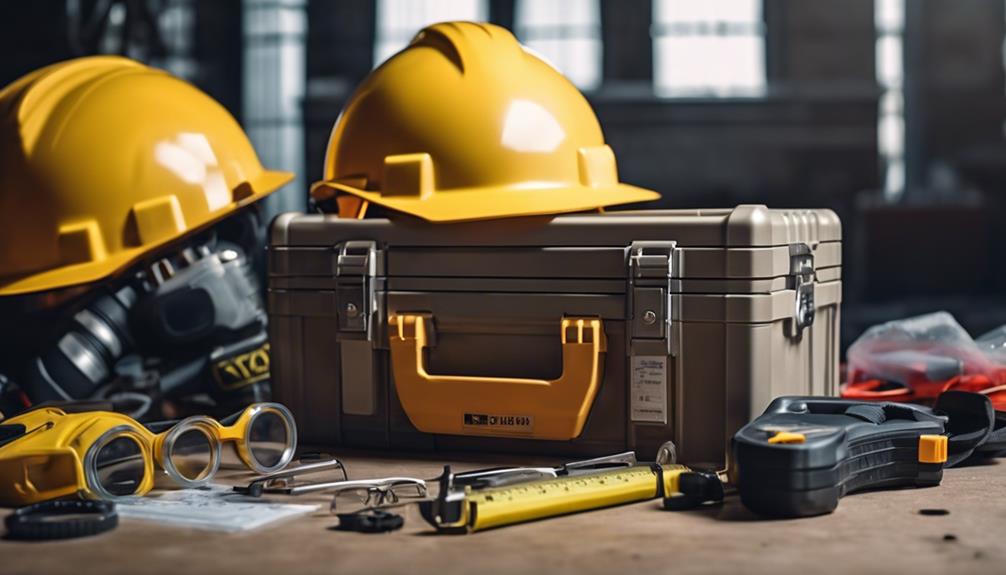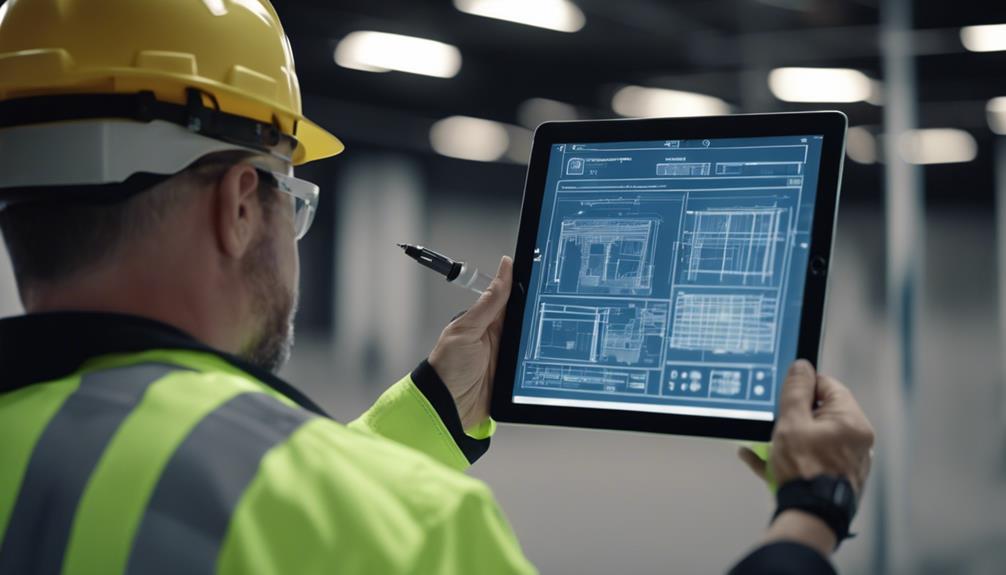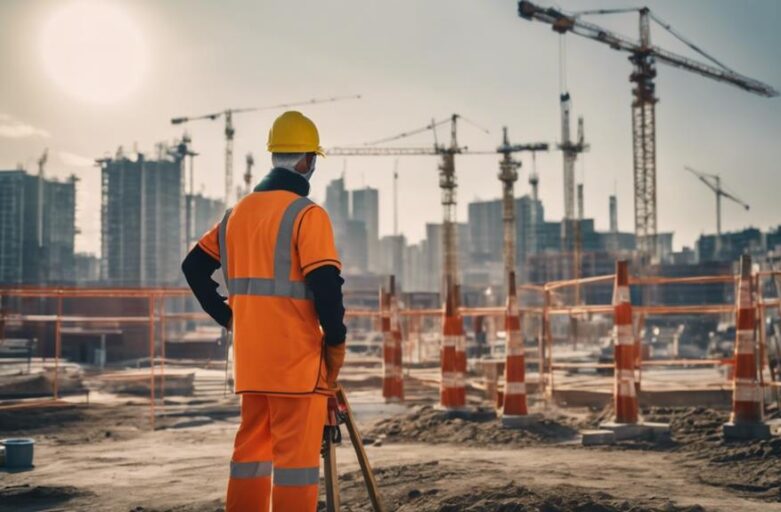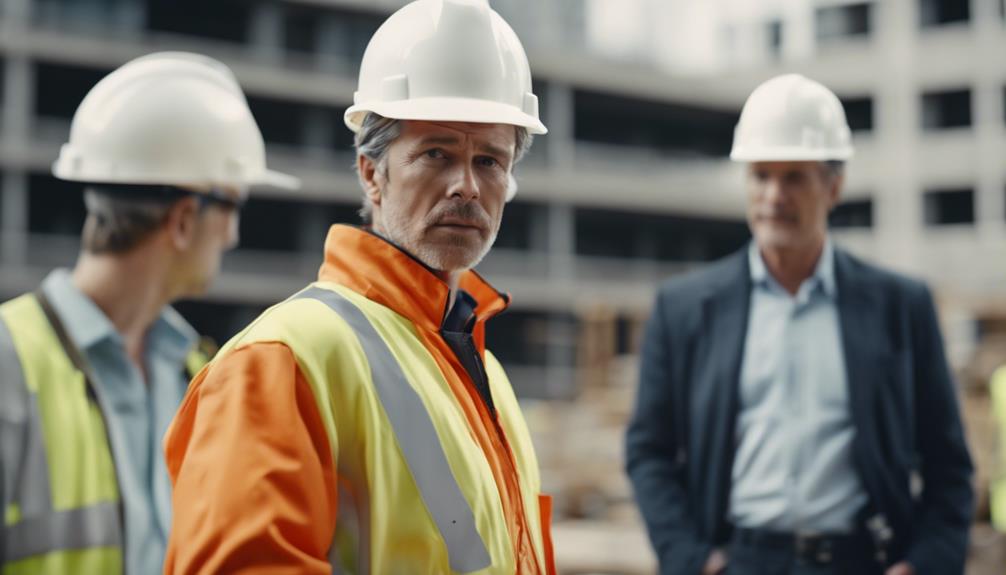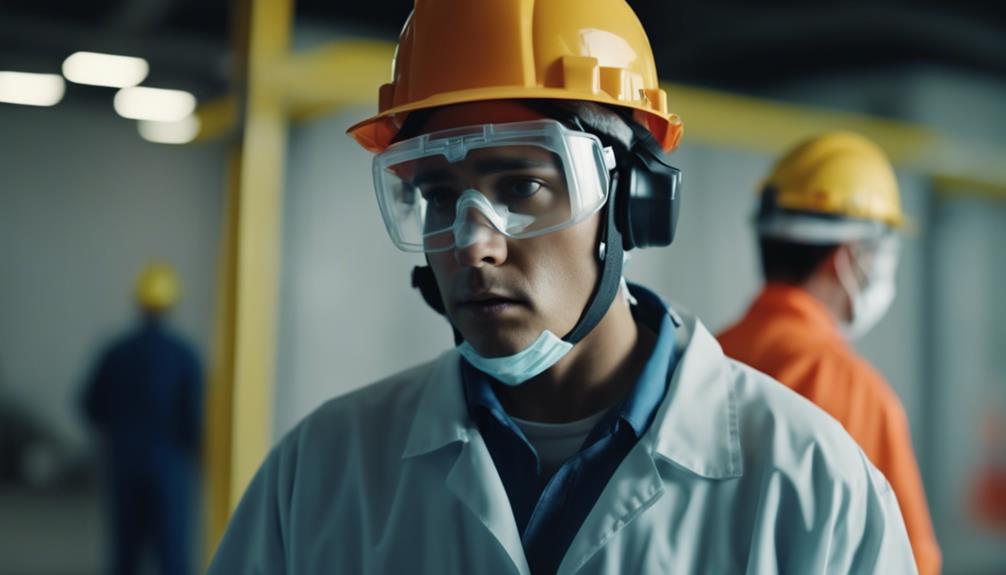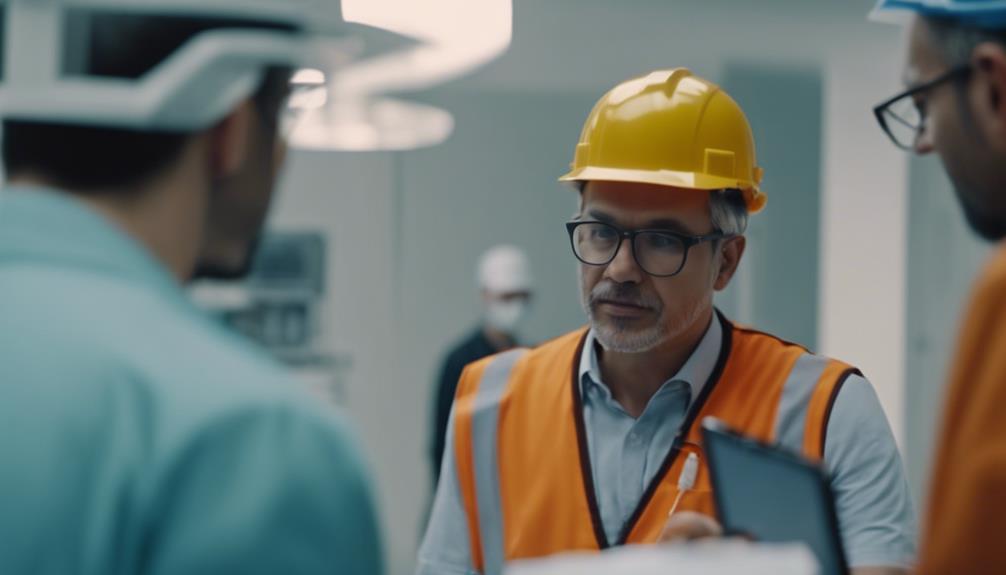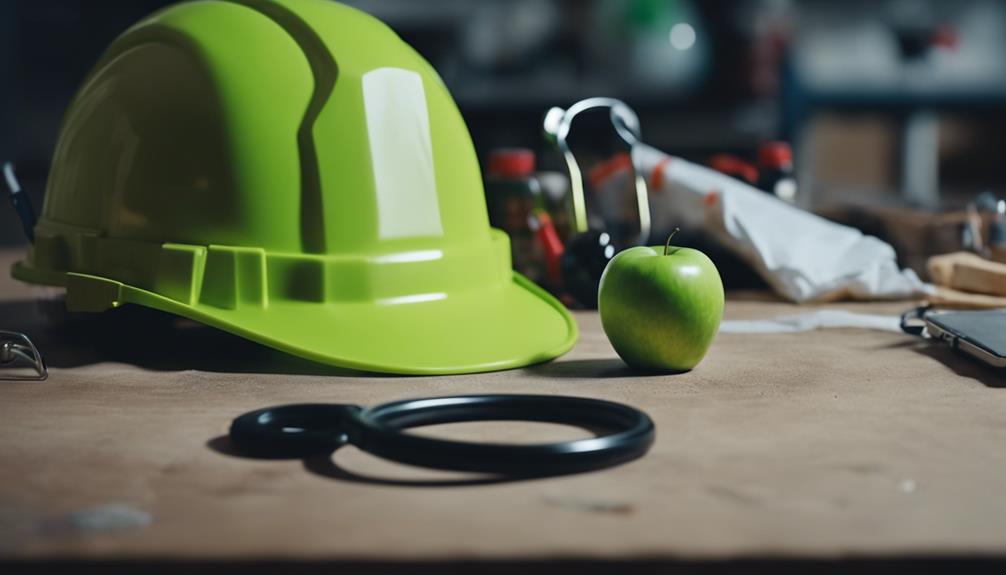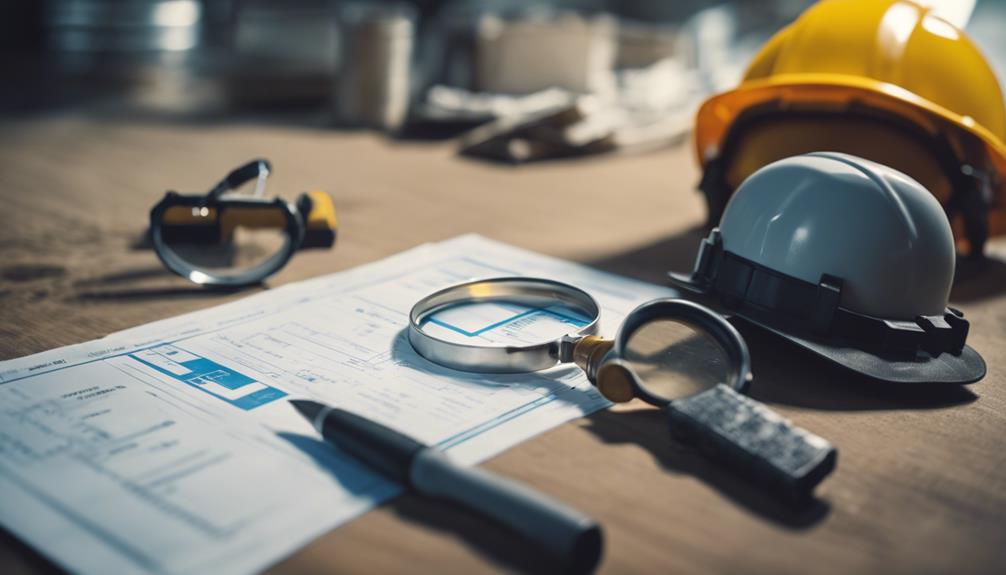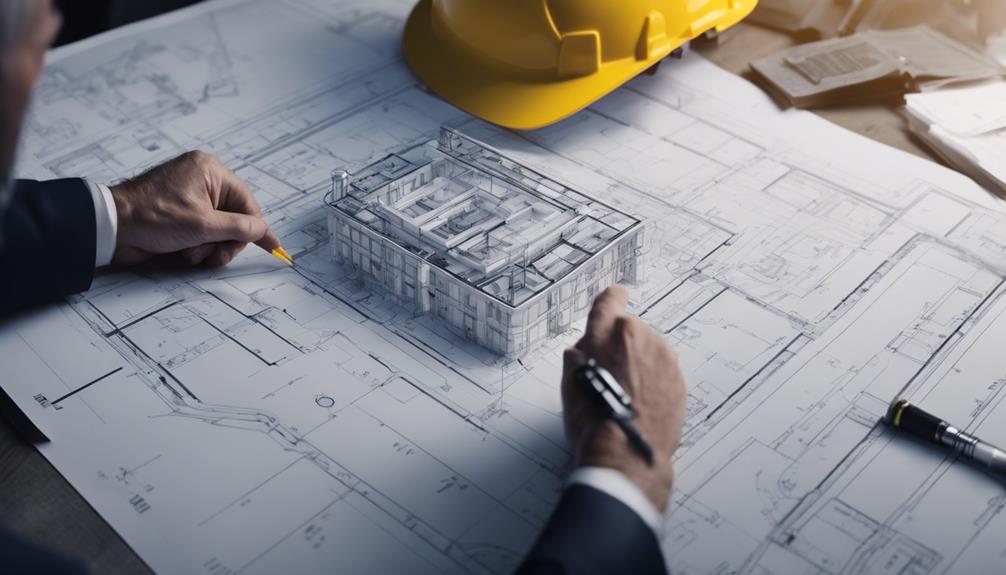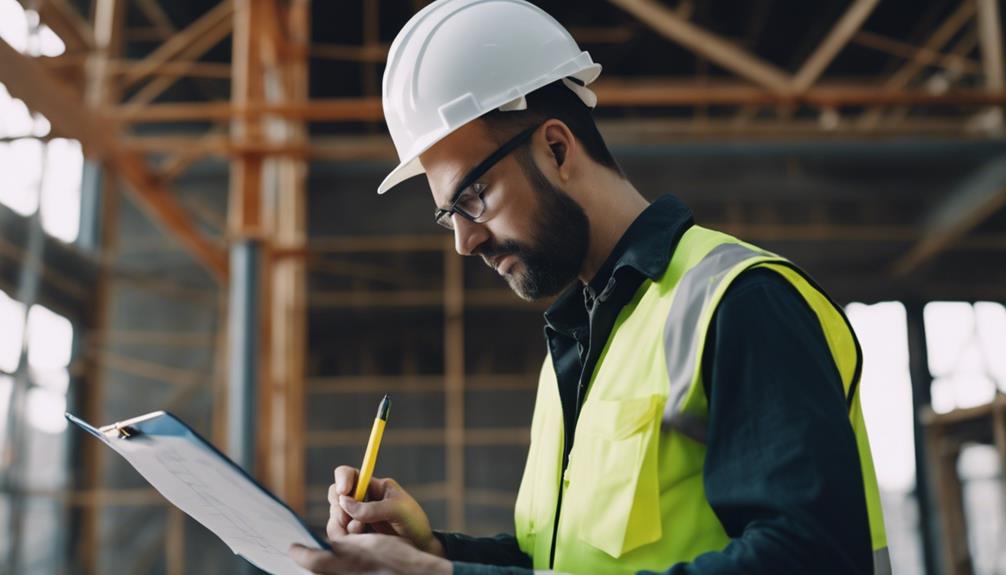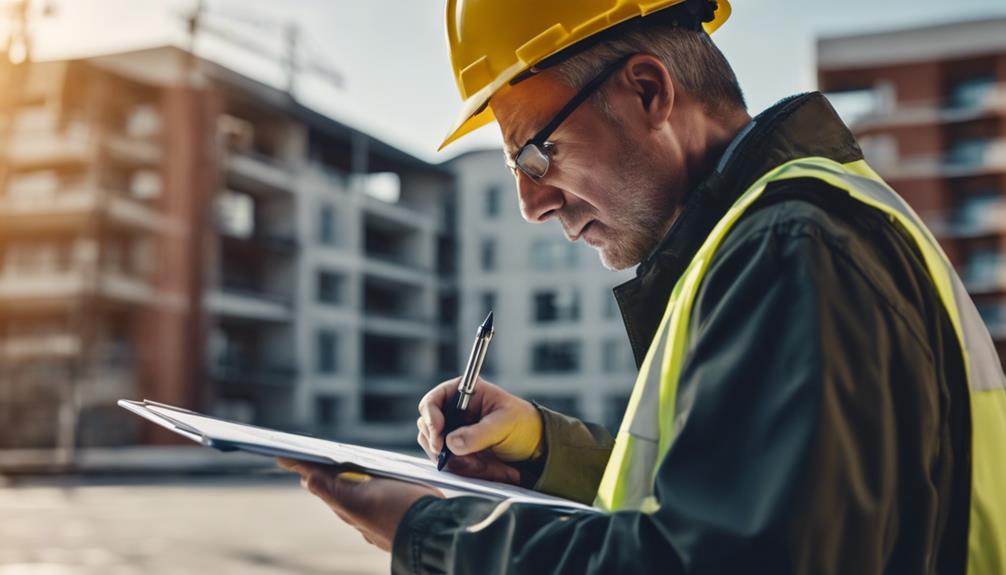Keeping your building safe is super important. You've got to make sure you've signed up your tall buildings by 2023. Always stay in the know about the newest rules. You can use computers to help you keep track of everything. Safety should be your top concern. It helps stop accidents from happening and shows your team that you care about them. It also helps make your building a safe place.
Regularly checking your building is like taking it to the doctor. It helps spot any safety problems early. Remember, if you don't follow the rules, you could get fined and your building could lose value.
Keep reading and you'll learn more about how being eco-friendly and studying past incidents can make your building safer and boost your reputation.
Key Takeaways
- Choose responsible individuals, known as Principal Accountable Persons (PAPs), to keep an eye on the following of building safety rules.
- Stay in the loop with the latest safety laws and explain to the construction workers about the changing safety norms.
- Use computer systems to help apply new safety rules in a smooth manner for building projects.
- It's important to regularly check buildings to ensure everyone is following safety rules and to spot any possible dangers.
- Following safety rules can not only stop accidents from happening but also save you from financial or legal issues.
Understanding Building Safety Regulations
Building safety rules are like the rules of a game. They're laws that say, by 2023, all tall buildings must be registered. They also decide who's in charge of making sure these rules are followed. We call these people Principal Accountable Persons (PAPs), or safety guards.
Imagine your school's principal who makes sure everyone follows the rules. The PAPs are like the principals for buildings. They check that everything is built and managed safely. They're the superheroes of the Building Safety Act, always making sure everyone sticks to the rules. They make sure everyone is doing their job right when it comes to building safety.
But, knowing these rules isn't just about learning them by heart. It's like understanding why we need to play fair in a game. We want a world where every tall building is safe, every person living in it's protected and everyone who's a job to do, does it right. When you understand this, you feel closer to your community. It's like being part of a team. Together, we can make sure everyone is safe.
Importance of Compliance in Construction
Understanding and following building safety rules is like playing on a good sports team. If you own a building or are a contractor, it's your job to make sure these rules are followed. Doing this isn't just about ticking boxes, it's about making sure everyone is safe.
Following these rules is really important in construction. It makes sure you're doing everything by the book and keeping a safe workplace. This helps to stop accidents and lowers risk. It's not just about staying out of trouble or keeping a good name, it's about taking care of the people who'll use your buildings.
You're not on your own in this. You're part of a group that thinks safety and following rules is important. Everyone has a part to play in making sure safety rules are followed. When you follow these rules, you're helping to make buildings safer. Remember, following safety rules is about more than just following rules. It's about being on a team that cares about people's safety. Step up and be a safety leader in your building projects.
Navigating Regulatory Changes
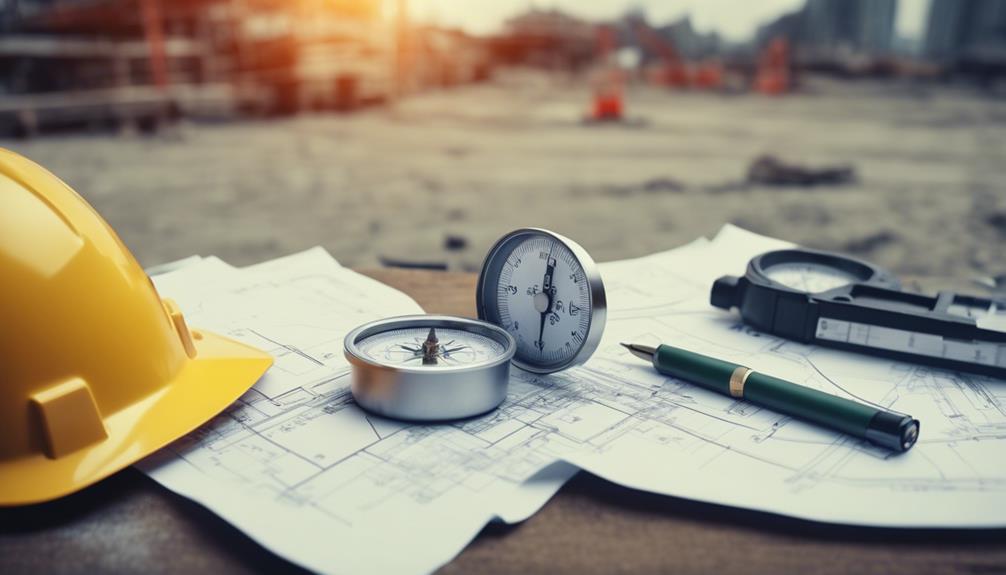
Keeping up with the new safety rules is a big part of your job in the construction industry. These rules aren't just paperwork, they help keep everyone safe.
Make sure you keep an eye on these new rules and understand them well. By doing this, you're not just following the law, you're also protecting people who come into your buildings.
Teaching your team about these new rules is important too. Give them the tools they need to understand and follow these ever-changing safety standards. Remember, you're not just a team, you're a community, and your job is to make sure your buildings are as safe as possible.
Think about using a computer system to help keep track of these new rules. This isn't just good for business, it's a way to show you're serious about safety.
Preventing Accidents Through Compliance
Staying safe in construction work is really important and it all starts with you. You need to always follow safety rules. This will help to keep everyone safe and stop accidents from happening.
Safety isn't just about not getting hurt. It's about caring for each other and taking responsibility. When you follow the rules, you're showing that you care about your team and everyone who works in construction.
Ignoring safety rules isn't a good idea. It could put people's lives at risk and ruin your good name. Plus, it breaks the trust your team has in you. By sticking to the safety rules, you're proving that you care about the safety of everyone on your team.
Keeping everyone safe is a team effort. We all need to know the rules and make sure we follow them. In the big picture, we're not just building things, we're making a community that values safety and care.
Role of Building Inspections
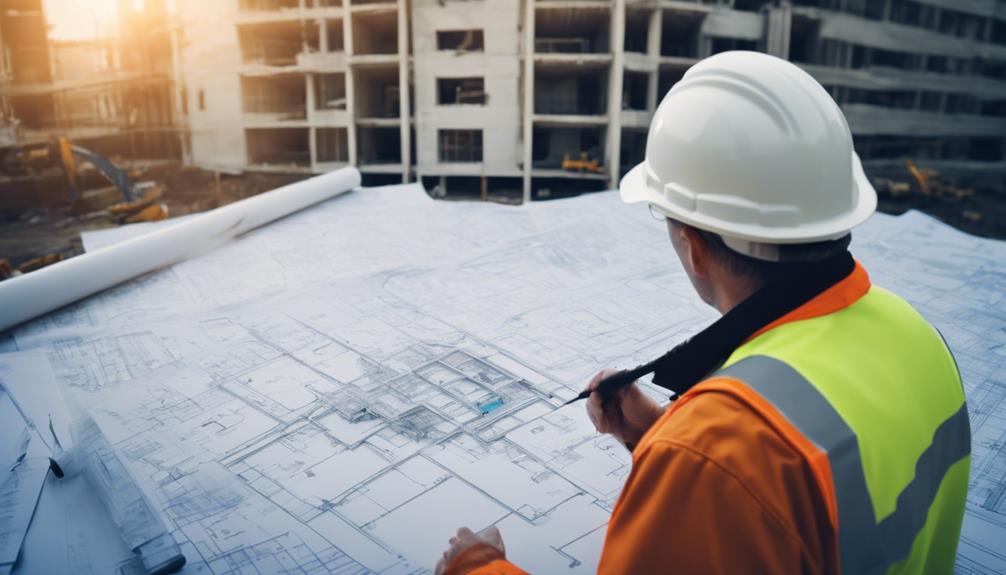
Building inspections are really important. They make sure buildings follow safety rules. Think of them as safety superheroes who check if every part of a building is safe.
They look at things like the building's strength and fire safety systems, making sure all the rules are followed. They spot any safety risks before they turn into big problems. Regular checks aren't just about filling in forms, but they help make sure that any issues are fixed quickly to keep everyone safe.
Building inspections aren't like police – they're more about helping everyone to value safety and follow the rules. The reports they make help show what's happening behind the scenes. These reports prove your focus on safety and rules, giving you confidence that you've done a good job.
Every part of a building that's checked helps keep the building safe. Building inspections are like quiet heroes, keeping our buildings, our safety, and our neighborhoods safe. They're here to help make sure we live in a safe and secure world.
Health Checks in Safety Compliance
Your job is to make sure everyone is safe. To do this, you need to do regular safety checks. These checks aren't just for following health rules, they help spot dangers before they cause trouble.
Don't just think of it as a list to complete – doing good health checks can really help make your workplace safer.
Regular Safety Inspections
Keeping your building safe is like keeping your body healthy. Just like you go for regular health check-ups, your building needs safety inspections. This will help you catch any safety risks early, like a doctor spotting a health issue.
During an inspection, everything in your building is examined thoroughly. This is done to make sure the building is safe for everyone. Just like you stick to your doctor's appointments, it's important to keep up with these inspections. This can help avoid any safety problems, take care of any repairs needed, and keep everything up to code.
After each inspection, a report is made. This report is like a doctor's note. It tells you what was found during the inspection, what can be done to fix any issues, and how to boost safety. It's very important to stick to the inspection schedule and to fix any problems found.
Being committed to regular inspections is key to keeping your building safe. Just like you take care of your health, take care of your building. Be ahead of the game, be safe.
Importance of Health Codes
Just like going to the doctor helps keep you well, following health rules helps keep buildings safe. Health rules are like a guidebook that tells us how to keep buildings safe.
Following these rules isn't just to avoid getting in trouble; it's about making sure people who live or work in these buildings are safe and sound. Health checks are important too. They make sure buildings are clean, have good air, and are safe.
If someone breaks these rules, they can get in trouble. But more importantly, it can put people's health at risk. So, sticking to health rules isn't just about following laws; it's about making sure we've a safe and healthy place to be in.
Mitigating Legal Risks
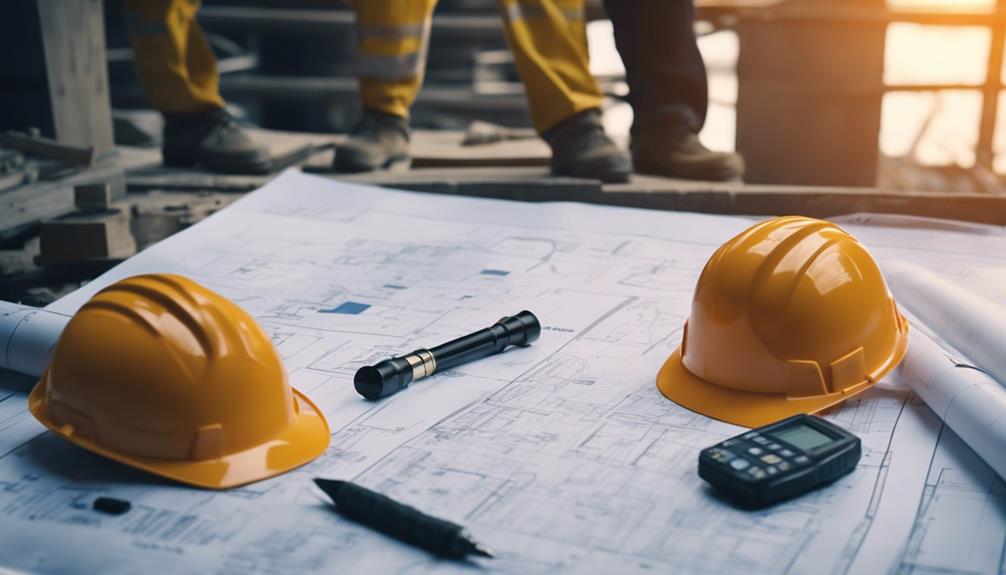
Let's dive into the key job of reducing legal dangers. This job is all about making sure your building follows all safety rules. This helps protect you and your building's people from getting into legal trouble. Don't worry, you're not on your own. We're all in this together to help each other keep our buildings safe and avoid problems.
Breaking the building rules can lead to big problems, like having to pay money or even being taken to court. To make sure you're following the rules and avoid these dangers, you need to stay on top of things. Regular check-ups and upkeep of your building aren't just a good idea, they're a must. This lets you find and fix any safety issues before they turn into bigger problems or hurt anyone.
Knowing and following building safety rules isn't just something you have to do, it's something you should care about. It shows you care about the people in your building, and it helps you avoid legal issues. It's all about making a safe place where everyone feels looked after.
Financial Risks of Non-Compliance
Have you thought about the money-related risks if you don't follow building safety rules? It's not only about the big fines you could get right away. It's also about how it can hurt your money situation in the long run.
Think about this: you could end up paying a lot of money for lawyers to fight claims that you didn't follow the rules. Your insurance costs could go way up because of safety rule violations. And what if people who were hurt because of safety issues sue you for money? This isn't just something that could happen, it's what really happens if you don't follow the rules.
But it's not just about money. If you don't follow the rules, people might think less of you, your property might be worth less, and people mightn't want to invest money with you in the future. Once people think less of you, it's hard to change their minds, and that can cost you money for a long time.
To put it simply, you can't afford to not follow the rules. Following building safety rules isn't just about doing what the law says. It's also about protecting yourself from losing money and from people thinking less of you. So let's not make life harder than it has to be. Let's follow the rules. It's not just about doing what we're told; it's about being part of a community that cares about safety and doing what's right. And you can't put a price on that.
Promoting Sustainable Building Practices

Let's dive into the world of sustainable building practices. This is all about using special technologies and materials that are good for the Earth. It's like giving our planet a helping hand!
Plus, these practices are totally safe and follow all the important building rules. Now, let's dig into how these methods can help us lessen harm to our environment and create a better future.
Implementing Green Technologies
You might not know it, but using green technologies in your building projects can cut energy use by half! It can also lessen the amount of carbon we put into the air and help make our environment healthier and more sustainable. These aren't just cool sounding words, they're real actions we can take to care for our planet for a long time.
Here are some cool green technologies and what they do:
| Technology | What it does | Green Badge |
|---|---|---|
| Solar Panels | Lessens the energy we use | LEED |
| Green Roofs | Lowers the cost of running a building | BREEAM |
| Energy-efficient Windows | Makes the air we breathe inside better | Passive House |
Eco-friendly Construction Materials
Using green building materials like bamboo and recycled steel can help lessen the harm we cause to our environment. This is a great way to look after our planet.
By using things like old wood, recycled glass, and other special materials, you're showing you care about being green and saving energy.
You mightn't realize how big of an impact you can make by using stuff like hempcrete, solar panels, safe paints, and windows that save energy.
When you choose these green materials, you're not just making buildings, you're helping make a better future. Be a part of this positive change.
Make your project a model of green building, and feel good about helping keep our planet safe.
Case Study: Successful Safety Adherence
Our case study shows how a tall building where people live made sure everyone stayed safe. They followed all the safety rules and kept track of everything they did.
The person in charge made sure everyone followed the rules. This shows that following rules isn't just something to check off a list, it's something everyone has to do together.
Everyone who had something to do with the building, like the people who built it and the people who live in it, worked together to keep it safe. This made the building a better place to live.
This case study shows that if everyone works together and takes safety seriously, a building can be a safe place to live.
Conclusion
Knowing about building safety rules is crucial for various reasons. It helps avoid mishaps, keeps you out of legal trouble, and encourages green habits. Checking your building frequently is key to adhering to these rules. Neglecting this task could result in hefty penalties. However, prioritizing safety not only ensures compliance but also enhances the safety and eco-friendliness of your space. A real-life example illustrates that successfully following safety rules is not only achievable but also beneficial for all parties involved.…




